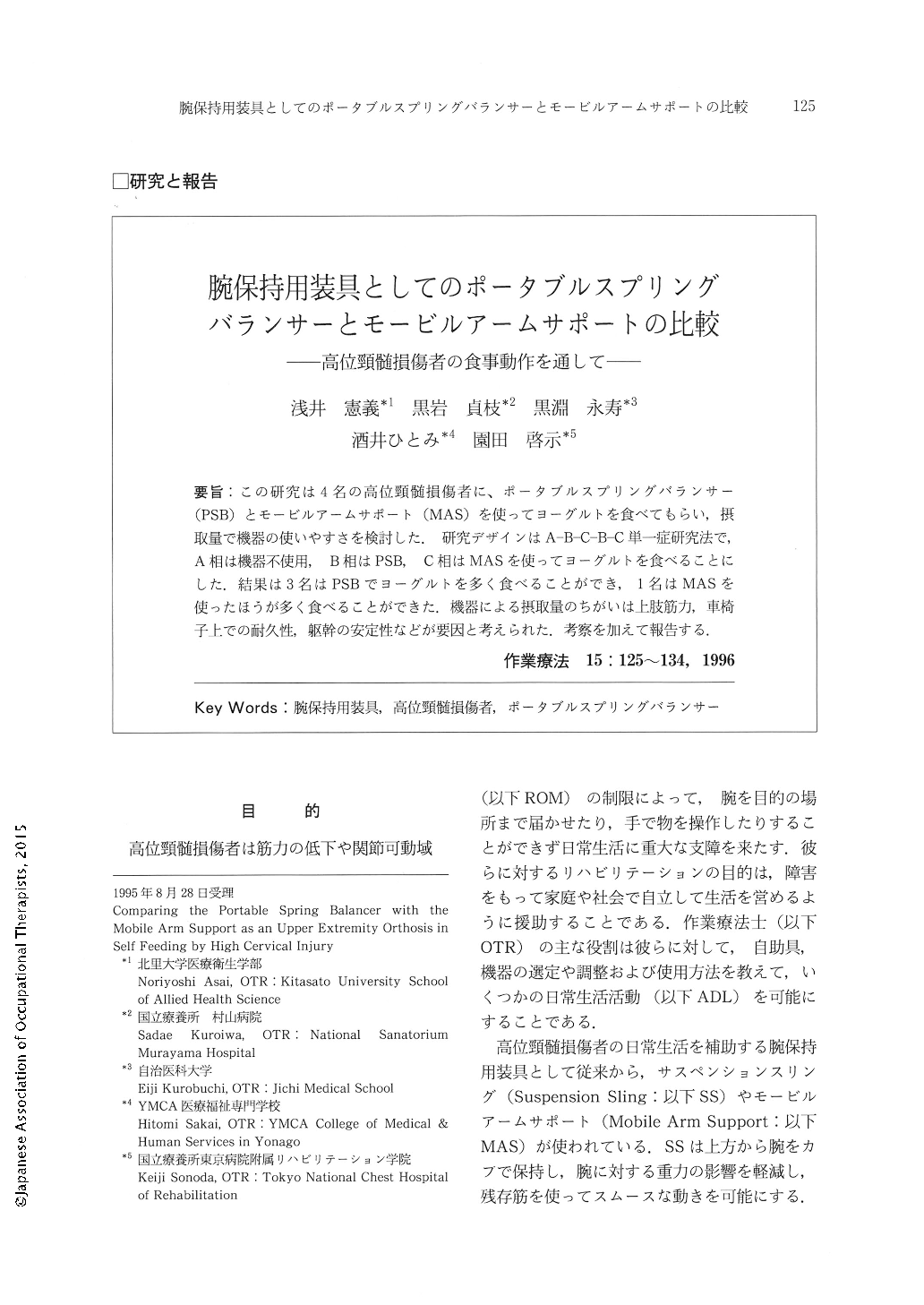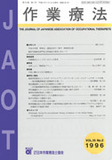Japanese
English
- 販売していません
- Abstract 文献概要
- 1ページ目 Look Inside
- 参考文献 Reference
- サイト内被引用 Cited by
要旨:この研究は4名の高位頸髄損傷者に、ポータブルスプリングバランサー(PSB)とモービルアームサポート(MAS)を使ってヨーグルトを食べてもらい,摂取量で機器の使いやすさを検討した.研究デザインはA-B-C-B-C単一症研究法で,A相は機器不使用,B相はPSB,C相はMASを使ってヨーグルトを食べることにした.結果は3名はPSBでヨーグルトを多く食べることができ,1名はMASを使ったほうが多く食べることができた.機器による摂取量のちがいは上肢筋力,車椅子上での耐久性,躯幹の安定性などが要因と考えられた.考察を加えて報告する.
The purpose of this study is to compare a new upper extremity orthosis, the Portable Spring Balancer (PSB), with the Mobile Arm Support (MAS) to determine which is more effective as a selffeeding device for persons with C4 or C5 spinal cord lesions. Also we want to know the physical criteria for this equipment. An A-B-C-B-C single subject design was used in this study. In phase A, the subject was asked to eat yogurt without either orthosis. Phase B consisted of the eating of yogurt with the PSB. The activity of phase C was the eating of yogurt with the MAS. The second phase B and the second phase C were the same as the first phase B and the phase C.
Three subjects could use the PSB better in feeding than the MAS. Their muscle strength was graded as 2 — for deltoids and biceps and their torelance in wheelchair was poor. One person used the MAS better than PSB. His muscle strength was graded 1+ for deltoids, 3+ for biceps, and 2 for his external rotators, and his stability of trunk in wheelchair was good.
This study shows that PSB is available for the quadriplegic person whose muscle strength is graded over 2— for deltoids and biceps, otherwise MAS is useful for the quadriplegic person whose muscle strength is graded 1 for deltoids, 3+ for biceps, and 2 for his shoulder external rotators.

Copyright © 1996, Japanese Association of Occupational Therapists. All rights reserved.


